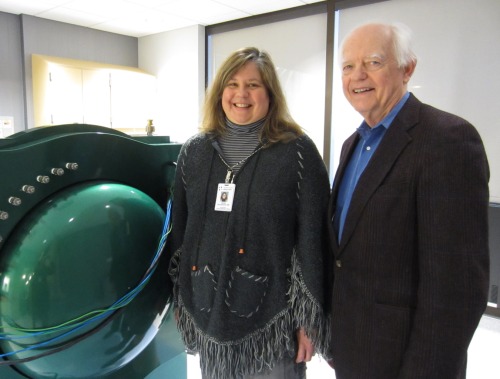Dramatic results in TBI research

Dr. Sarah Rockswold and Dr. Gaylan Rockswold
Dr. Gaylan Rockswold and Dr. Sarah Rockswold, along with researchers at the University of Minnesota and Minneapolis Medical Research Foundation report that the combined use of hyperbaric oxygen (HBO2) and normobaric hyperoxia (NBH) therapies provides better outcomes in patients with severe traumatic brain injury (TBI) than the standard intensive neurosurgical care recommended for this injury.
“We have never seen this kind of functional outcome improvement in a TBI study,” explains Dr. Sarah Rockswold. “Combining HBO2 treatments with NBH treatments made a dramatic difference in outcomes.”
In HBO2 therapy, the patient is placed in a pressure chamber set at an atmospheric pressure higher than normal and given pure oxygen; in NBH therapy, patients receive pure oxygen at normal atmospheric pressure. Both treatments are designed to improve the amounts of oxygen delivered to organs and tissues throughout the body. It is felt that the combination of the 2 treatments may have a synergistic effect.
Dr. Rockswold says that while it was a small trial, they were very encouraged by the dramatic results and hope to begin a larger, multi-center trial with the NIH.
Severe TBI accounts for about 10 percent of the 1.7 million brain injuries each year in the U.S., and it’s mostly people under the age of 64 who are affected. In general, severe TBI costs the nation 72 billion each year.
“So if we could help these people, it greatly increases their productivity, saves money, and most of all improves their likelihood of returning to the quality of life they enjoyed before the injury,” says Dr. Rockswold.
The research indicated that 74 percent of the patients had a favorable outcome with the combined therapy, versus 38 percent.
Full details on the effects of this combined treatment are provided in the paper “A prospective, randomized Phase II clinical trial to evaluate the effect of combined hyperbaric and normobarichyperoxia on cerebral metabolism, intracranial pressure, oxygen toxicity, and clinical outcome in severe traumatic brain injury: Clinical article,” by Drs. Sarah and Gaylan Rockswold and colleagues, in the Journal of Neurosurgery. This article was based on the most recent severe TBI research done at HCMC funded through the National Institutes of Health (NIH).
The Traumatic Brain Injury Center at Hennepin County Medical Center offers comprehensive, multidisciplinary patient care, education and research to serve people who have sustained a traumatic brain injury. Providing a full range of state-of-the-art medical and rehabilitative services, the TBI Center features caregivers whose expertise spans the entire continuum of care for adult and pediatric TBI patients — from prevention to emergency care, neurosurgery, critical care, rehabilitation and the Mild to Moderate Traumatic Brain Injury Clinic. Each year, Dr. Rockswold and the other professionals at the Traumatic Brain Injury Center care for more than 2,000 patients.

